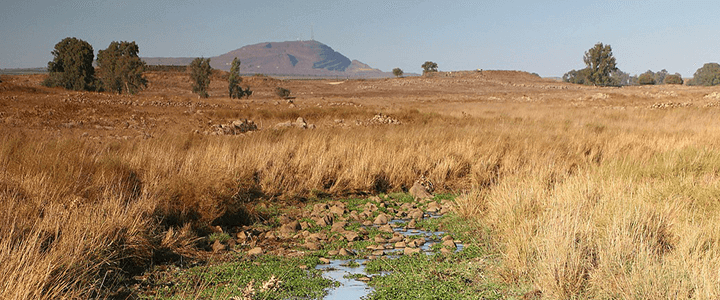While the world was watching the unfolding drama of three American prisoners returning home from North Korea, another drama was unfolding in Syria and the Golan Heights. The Israeli government accused the Iranian Islamic Revolutionary Guards Corps, also known as the Quds force, of firing missiles into the Golan Heights. Soldiers from the IRGC have been deployed to Syria in support of the regime of strongman Bashar al-Assad. This prompted what Israeli newspaper Haaretz called the “most extensive strikes in Syria in decades”.
Iran launched 20 rockets into the Golan, four of which the Israeli government says its Iron Dome protection system intercepted (but for which it has offered no proof), with the rest falling where they did no damage. This is a serious escalation of the conflict. Iran has waged a proxy war against Israel for decades through its Hezbollah allies in Lebanon, but this marks the first time that Israel has directly accused Iran of attacking its territory, although it accused Iran of sending a drone into Israeli airspace in February.
Israel strikes Dozens of targets
Israel struck at Iranian targets, including the launch sites of the missiles fired into Golan.
It was a bad night to be a Syrian air defense artillery gunner. Israel warned Russia, and apparently the Syrian government, that it would be attacking Iranian targets, and not to interfere. But Syrian ADA units tried to do their jobs, and it ended badly for them. Israel engaged in a little SEAD — suppression of enemy air defenses — destroying five Syrian batteries.
Israel released a dramatic video – recorded by a camera mounted in the nose of one missile – as it struck a Russian-made SA-22 Greyhound anti-aircraft vehicle. The SA-22, known as the Pantsir-S1 to its makers, is a combination guided missile and gun system, mounted on a wheeled chassis, that utilizes a modern phased-array radar. In this case, it failed its mission.
Either the SA-22 isn’t very good, or its Syrian operators aren’t very good. Likely both. The gun-camera video shows the vehicle parked in the middle of a runway in what looks to be a transport configuration with its guns and missiles stowed rather than pointing at the sky ready to fire. Four people stand off to the side, near the edge of the runway, but one unlucky soul runs towards the vehicle as the missile closes-in.
The Golan Heights are Strategically Important
Israel seized the Golan Heights during the Six-Day War with Egypt, Syria, and Jordan in June of 1967, along with the Gaza Strip, West Bank, and Sinai Peninsula. Israel launched a pre-emptive strike, first into Sinai and later the West Bank and Golan, in response to Egypt’s decision to close the Straits of Tiran, cutting-off the Port of Eilat and the Gulf of Aqaba from the Red Sea.
The high Golan plateau lies east of the Sea of Galilee along Israel’s border with Syria. After Israel attacked Egypt in the Sinai, Syria and Egypt briefly joined to form the United Arab Republic in 1958. There was brief hope that Iraq would join the Republic, but instead, Syria withdrew from the union in 1961, although it maintained common cause against Israel with Egypt and Jordan.
Israel dealt the Arabs a crushing defeat in the Six-Day War, and retained control of the Golan Heights, which have been contested ever since. Israel formally annexed the area in 1981, but the United Nations has long refused to acknowledge that move. You will therefore hear the Golan referred to as “Israeli occupied,” but Israel long ago abandoned any hope of a negotiated settlement that might return the territory to Syria.
The land simply gives Israel too good of a defensive barrier between it and Syria to give it up. The terrain is so good, in fact, that during the 1974 Yom Kippur War, one platoon of Israeli tanks that had been delivering deadly fire into what became known as the Valley of Tears was able to hold off a Syrian tank battalion… despite the fact that the Israelis were out of ammunition.
The IRGC would be wise to remember this fact as it contemplates its next move against Israel.




